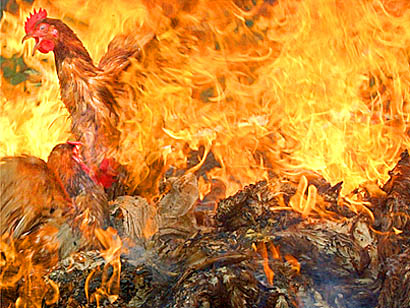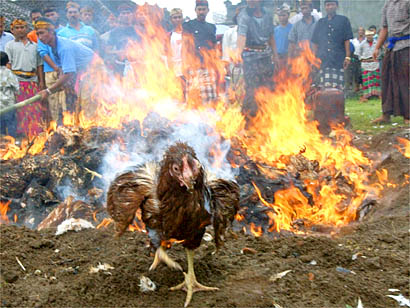|
.
Stephen M. Apatow Following the outbreak of HPAI at a farm about 80 kilometres south-east of the capital, Seoul (December 2003), it was noted that if the outbreak moved beyond the borders of Korea to countries in the East Asian-Australasian Flyway via migratory bird patterns, could we be looking at a widespread international multi-country outbreak (such as West Nile Virus throughout North America). The East Asian-Australasian Flyway stretches from within the Arctic Circle in Siberia and western Alaska, through North and South East Asia to Australia and Aotearoa/New Zealand. It covers twenty countries including Russia, Japan, China, Taiwan, Korea, Malaysia, Thailand, Vietnam, Philippines, Indonesia, Mongolia, Alaska, Cambodia, Myanmar, Bangladesh, East Timor, Brunei, Singapore and Papua New Guinea, as well as Australia and Aotearoa/New Zealand. At that time, a call was made for calculations associated with the 3-5 day incubation period and time frames/geographic regions that could be effected. Prevention of contact,
not killing of wild birds, needed to fight bird flu - UN News Centre, 18
February 2004 18 February 2004 – The United Nations Food and Agriculture Organization (FAO) warned today that killing wild birds is not an appropriate measure to control the spread of bird flu, which has already ravaged domestic poultry farming in nine Asian countries and led to 29 human cases, 20 of them fatal. What is needed is a prevention system based on control and surveillance to ensure that any contact between wild birds and poultry is avoided or at least monitored, the Rome-based agency said. “Experience has shown that this has been a good strategy and that the destruction of wild birds is unnecessary,” FAO said. The outbreak of the H5N1 strain of bird flu has already led to the culling some 80 million chickens but the agency reported last week that the spread of the virus was still not under control. Among measures FAO recommended for preventing infection from wild birds are steps by commercial poultry owners to ensure that poultry pens and drinking water cannot be contaminated by migrating species. If this cannot be done, then measures should be taken to ensure that the drinking water is safe. Such steps include erecting pens to keep domesticated poultry away from wild birds and keeping domestic waterfowl separate from poultry where both have access to the same water sources. Commercial poultry producers should also apply good biosecurity measures such as maintaining a high level of security regarding all traffic coming onto poultry farms and a very high standard of hygiene to minimize the disease’s spread. "Good biosecurity is a must," FAO said. “If we understand when, how and where wild birds migrate, then we are better prepared and know when we should be more vigilant and have better surveillance in place.” The disease has spread to humans in Viet Nam, which has reported 21 confirmed cases, 14 of them fatal, and Thailand with 8 cases, 6 of them fatal. Countries where outbreaks
of the H5N1 strain in birds have so far been confirmed are Cambodia, China,
Indonesia, Japan, Laos, Pakistan, Republic of Korea, Thailand and Viet Nam.
Back to Influenza: Biodefense and Epidemiological Tracking Copyright © 1994-2003 Humanitarian Resource Institute.
All rights reserved |


